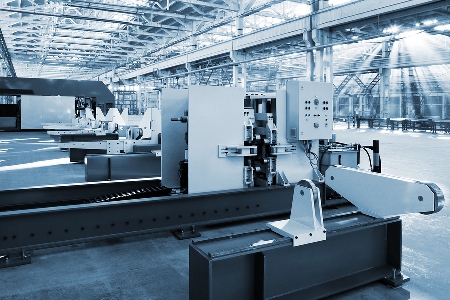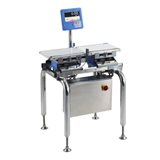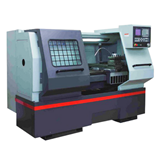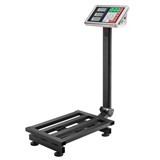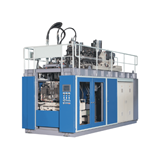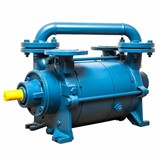The manufacturing sector in Australia employs close to a million Australians, represents 8 per cent of the country's GDP, and inputs $161.5 billion into other sectors of the economy – and yet it still gets bad press.
As Manufacturing Australia – a business coalition of Australia's largest manufacturers – is at pains to point out, almost the single biggest challenge manufacturing faces is one of perception.
The perception is that manufacturing is a "sunset" industry, whose future is predetermined, and will only be marked by continued decline.
If that challenge is a significant one, it is by no means the only one. Manufacturing has in recent years had to endure the perfect storm of a high Australian dollar, rising labour and input costs, increased imports, and limited access to finance since the global financial crisis.
But endure it has, Manufacturing Australia says, by adapting and repositioning itself to engage in higher value-added activities, restructuring and reducing costs and increasing exports.
So what are the powerhouse sectors of Australian manufacturing today, and how are they performing?
Food & beverage
According to the Australian Bureau of Statistics (ABS), food and beverage processing is Australia's largest manufacturing sector, contributing $22 billion to Australia's GDP. The sector comprises nearly 7000 businesses employing 222,300 people, however almost three quarters of the industry's total domestic revenue is in the hands of the 50 largest food and beverage companies.
Tom Wiley is the Managing Director of Wiley, a full service project delivery company specialising in the design, engineering, construction and servicing of world class food manufacturing facilities.
"With the recent change of government I am optimistic that the right policies will now be put into play and we will see confidence return to food manufacturers and agribusiness allowing both shelved and new opportunities to move forward," Wiley told IndustrySearch.
"I believe we will see some real progress with the new federal government promising major advances in the Free Trade Agreement talks with Asia, and significant reforms in tax and regulation."
Wiley said he wasn't so much concerned that the sector's revenue was held in the hands of relatively few food and beverage processors, but rather about the impact of the ongoing dominance and influence of the big retailers.
"Most sectors have major players that dominate the revenue streams. What I find most interesting, and fun frankly, is how this pressure always creates new thinking and new innovations in food manufacturing," Wiley said.
"But I see a trend emerging where the large retailers are only signing short-term contracts with food manufacturers.
"This directly increases the difficulty for these businesses in securing financing from the banks to fund the capital works necessary to fulfil these contracts."
Machinery & equipment
Machinery and equipment manufacturing is sub-divided into two core categories – transport and non-transport. Together it generates $21.6 billion in GDP and employs over 192,000 people, second only to the food and beverage sector in manufacturing.
According to a recent Commonwealth Bank of Australia (CBA) issues paper machinery and equipment manufacturing is outperforming the rest of manufacturing, although the reality is that the sector as a whole has been propped up by the mining construction boom, particularly the demand for electrical equipment.
Australian Manufacturing Technology Institute Limited (AMTIL) is a peak national body representing the interests of manufacturing technology suppliers and users within the precision engineering and advanced manufacturing sector.
According to CEO Shane Infanti, while there has been an undeniable drop in investment in capital over the past four years, the signs are improving and the outlook is positive.
"We've got quite a lot of ducks that are lining up now that would indicate that over the next 12 months investment in technology and innovation is on the improve," Infanti told IndustrySearch.
"Mining has been a growth sector, as has aerospace, rail and defence. We are seeing a lot of opportunities in those areas and we welcome them with open arms because of the ongoing uncertainty over the automotive sector.
"We need to look at transitioning our members out of automotive into those other areas."
Metal products
Australia's metal products manufacturing industry has slowed over the past few years. The sector is divided into primary and fabricated metal products and together, despite the slowdown, they contribute over $21 billion to GDP, employing nearly 84,000 people.
The sector is closely allied to the construction industry, with some 20 per cent of structured metal product manufacturing supplying the residential construction market. With residential construction activity tipped to increase through 2014 there should be a flow on benefit for metal product manufacturers.
Infanti agrees, but expects the sheetmetal and metal fabrication side of the industry to fare better than the metal cutting sector.
"One of our biggest challenges with metal cutting is that we don't manufacture product. Most companies in the metal cutting business are not product manufacturers and are reliant on making parts, and when you are relying on tapping into other businesses you are always at risk that the business may go overseas," Infanti said.
"You look at Australia's strength in metal manufacturing, it's in low volume, high precision, niche products. So for instance one-off titanium knee joints is a perfect example of an area where we can thrive.
"Another area we need to focus on is the whole major projects and government procurement area. How do we get 40 per cent local content into a major project? That's the sort of thing that can reinvigorate a country."
Petroleum, coal, chemical & rubber products
The fourth significant pillar of Australia's manufacturing sector is the petroleum, coal, chemical and rubber products sector which employs over 90,000 Australians and contributes some $17.6 billion to the country's GDP.
The sector covers a hugely diverse range of industries manufacturing everything from fuels, lubricants and construction materials to industrial gases, acids, dyes and pigments. Chemical products traverse even broader categories from high end medicines and pharmaceuticals to fertilisers and pesticides.
Then there is plastic, which because of its versatility continues to replace traditional materials across a range of allied construction and manufacturing industries.
This sector enjoyed significant growth from 1993 until the early 2000s, but has given up much of those gains in the last 10 years.
In the case of plastic and chemicals industry, one significant issue is red tape, with manufacturers having to comply with more than 140 pieces of overlapping legislation imposed at all levels of federal and state government.
"Our industry underpins almost all manufacturing in Australia," Plastics and Chemicals Industry Association chief executive, Margaret Donnan, said.
"Without a thriving chemicals and plastics industry the Australian economy simply would not be the same.
"As a nation we need an integrated and sophisticated economy that transforms raw materials into goods we can consume and export."
On Australian manufacturing's current trajectory CSIRO predicts the further loss of jobs and output, an increased reliance on exports, the loss of the means of production, and significant interruption to downstream supply chains.
However if the industry can innovate, attract capital, develop feedstocks and ensure an affordable and reliable energy supply, the trend can be reversed.
After all, the demise of Australian manufacturing has been predicted for years yet it still employs close to a million Australians and represents 8 per cent of the country's GDP. There is plenty of life in the old dog yet.
Comment on the subject below and on our LinkedIn discussion at the Australian IndustrySearch Group.
- Suppliers
- New to IndustrySearch? Book a Demo
- Advertise with us
- Login
- Email Marketing
- Buyers
- Get Quotes
- Articles & Ideas
- Login
- Subscribe to newsletter
- My Details
- Get Quotes
- Automation & Control
- Automotive Workshop Equipment
- Commercial Cleaning Equipment & Supplies
- Construction Equipment & Heavy Machinery
- Conveyor Systems & Components
- Electrical & Power Generation Equipment
- Electronic Components
- Farming & Agriculture
- Food & Beverage Processing
- Forklifts & Forklift Attachments
- Hydraulic & Pneumatic Equipment
- Industrial Materials, Tools & Components
- Industrial Pumps
- IT Hardware & Industrial Computing
- IT Software & Applications
- Laboratory Equipment & Instruments
- Manufacturing & Industrial Equipment
- Material Handling & Lifting Equipment
- Metalworking & Machining
- Mining Equipment & Machinery
- Packaging & Labelling Machinery
- Pallet Handling Equipment
- Personal Protective Equipment
- Security & Surveillance
- Test & Measurement
- Transport & Logistic Equipment
- Warehouse Storage, Shelving & Racking
- Waste Treatment & Environmental Management
- Welding Machines & Accessories
- Woodworking & Joinery Machines
- Workplace Equipment
- Workplace Safety Equipment
- Get Quotes
- Automation & Control
- Automotive Workshop Equipment
- Commercial Cleaning Equipment & Supplies
- Construction Equipment & Heavy Machinery
- Conveyor Systems & Components
- Electrical & Power Generation Equipment
- Electronic Components
- Farming & Agriculture
- Food & Beverage Processing
- Forklifts & Forklift Attachments
- Hydraulic & Pneumatic Equipment
- Industrial Materials, Tools & Components
- Industrial Pumps
- IT Hardware & Industrial Computing
- IT Software & Applications
- Laboratory Equipment & Instruments
- Manufacturing & Industrial Equipment
- Material Handling & Lifting Equipment
- Metalworking & Machining
- Mining Equipment & Machinery
- Packaging & Labelling Machinery
- Pallet Handling Equipment
- Personal Protective Equipment
- Security & Surveillance
- Test & Measurement
- Transport & Logistic Equipment
- Warehouse Storage, Shelving & Racking
- Waste Treatment & Environmental Management
- Welding Machines & Accessories
- Woodworking & Joinery Machines
- Workplace Equipment
- Workplace Safety Equipment
Trusted by 1,000,000+ Australian industrial buyers
Buyers
- Discover products & solutions
- Login
- Subscribe To Newsletter
- Browse All Products
- Read Articles
Suppliers
Advertise
- Promote your products & solutions
- New to IndustrySearch? Book a Demo
- Login / Forgot Password
- Advertise Your Products
- Success Stories
- Email Marketing
- Suppliers
- Advertise with us
- Login
- Email Marketing
- Buyers
- Get Quotes
- Articles & Ideas
- Login
- Subscribe to newsletter
- My Details
Get Quotes
- Automation & Control
- Automotive Workshop Equipment
- Commercial Cleaning Equipment & Supplies
- Construction Equipment & Heavy Machinery
- Conveyor Systems & Components
- Electrical & Power Generation Equipment
- Electronic Components
- Farming & Agriculture
- Food & Beverage Processing
- Forklifts & Forklift Attachments
- Hydraulic & Pneumatic Equipment
- Industrial Materials, Tools & Components
- Industrial Pumps
- IT Hardware & Industrial Computing
- IT Software & Applications
- Laboratory Equipment & Instruments
- Manufacturing & Industrial Equipment
- Material Handling & Lifting Equipment
- Metalworking & Machining
- Mining Equipment & Machinery
- Packaging & Labelling Machinery
- Pallet Handling Equipment
- Personal Protective Equipment
- Security & Surveillance
- Test & Measurement
- Transport & Logistic Equipment
- Warehouse Storage, Shelving & Racking
- Waste Treatment & Environmental Management
- Welding Machines & Accessories
- Woodworking & Joinery Machines
- Workplace Equipment
- Workplace Safety Equipment
Get Quotes
- Automation & Control
- Automotive Workshop Equipment
- Commercial Cleaning Equipment & Supplies
- Construction Equipment & Heavy Machinery
- Conveyor Systems & Components
- Electrical & Power Generation Equipment
- Electronic Components
- Farming & Agriculture
- Food & Beverage Processing
- Forklifts & Forklift Attachments
- Hydraulic & Pneumatic Equipment
- Industrial Materials, Tools & Components
- Industrial Pumps
- IT Hardware & Industrial Computing
- IT Software & Applications
- Laboratory Equipment & Instruments
- Manufacturing & Industrial Equipment
- Material Handling & Lifting Equipment
- Metalworking & Machining
- Mining Equipment & Machinery
- Packaging & Labelling Machinery
- Pallet Handling Equipment
- Personal Protective Equipment
- Security & Surveillance
- Test & Measurement
- Transport & Logistic Equipment
- Warehouse Storage, Shelving & Racking
- Waste Treatment & Environmental Management
- Welding Machines & Accessories
- Woodworking & Joinery Machines
- Workplace Equipment
- Workplace Safety Equipment
Trusted by 1,000,000+ Australian industrial buyers

